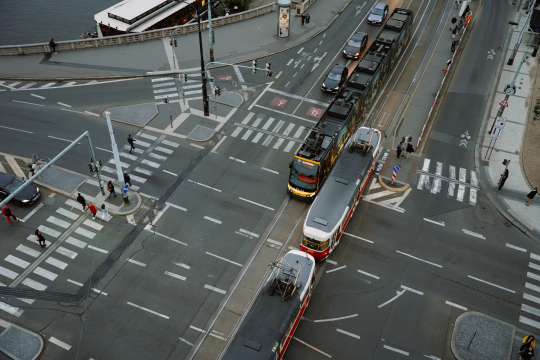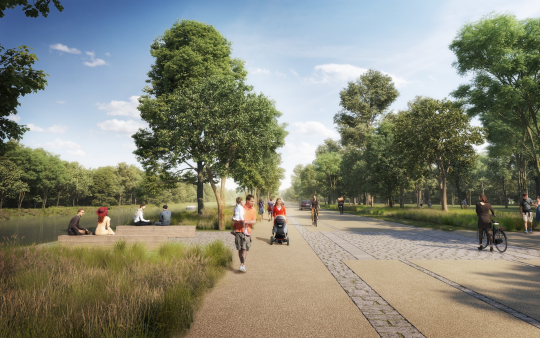IPR is promoting the sensitive reconstruction of Libeňský bridge
Prague is addressing the issue of how to deal with Libeňský bridge. The Technical Administration of Roadways has found that the construction is in a state of disrepair. An intensive debate over its future has been taking place over the past several months. Should it be renovated? Pulled down and a new bridge built? Or a copy? Another option is also to extend it to carry another two lanes of traffic, as has been proposed by the Technical Administration of Roadways. The IPR Prague emphasises the unique architectural value of the bridge and recommends that its reconstruction is carried out in a sensitive manner.

“The bridge arouses unusual emotions among both experts and the general public – and this is understandable,” says architect Petr Hlaváček, Director of the Prague Institute of Planning and Development. “It is the work of the legendary architect, Pavel Janák. He also built Hlávkův bridge and the Škodův Palace, which is now the seat of the Prague City Hall.”
The conclusions of a study, which was commissioned from the Czech Technical University Klokner Institute by the Technical Administration of Roadways at the request of the Transport Councillor, Petr Dolínek, were published this week. This finds that the most suitable scenario is one where the bridge is largely rebuilt and expanded by 5 metres, while using the original supporting pillars of the current bridge. The analysis identified the option to reconstruct the bridge as being the most risky: firstly in terms of the cost, and secondly, because of the shorter lifetime of the reconstructed bridge compared to that of a newly built bridge.
The IPR Prague does not agree with the conclusions of the study. “We are delighted that Councillor Dolínek has opened up the debate on the future of the bridge. However, we consider the results of the study to be wrong,” says Petr Hlaváček. “As can be seen from the expert report, the Klokner Institute has practically ignored the option of reconstructing the bridge. We find the argument that the bridge is in disrepair and that a decision must be made quickly and the work begun to be irrelevant. The bridge can be closed for a time until we find the ideal solution. Until such time, trams can be diverted over a temporary structure. This would be better than irreversibly destroying the bridge without properly considering all the options.”
There are also arguments which have not yet been discussed which support the option of conserving the bridge. “Both waterfronts connected by the bridge are currently undergoing major transformations, which will continue into the future. A new city district is being developed on the Libeň side, which will include, alongside residential and office buildings, extensive green areas for recreation and relaxation,” adds Hlaváček. “Libeňský bridge is currently important in terms of traffic, but over time it is very likely to become an important pedestrian attraction. The uniqueness of its architectural design will then regain its relevance.”
“We support the option of a sensitive reconstruction and the restoration of the original architectural forms. Even if this option is actually the most expensive – Janák’s bridge has an architectural value that has been unjustly neglected and it is definitely worth conserving, even if the cost is higher and the construction period longer. What is important is the final result,” claims Petr Hlaváček.
If another serious study shows that the bridge can definitely not be repaired, IPR Prague is of the opinion that an international architectural competition should be announced to build a completely new bridge. “We support a ‘clean’ solution. It seems to us that building an approximate replica or simply using the original pillars is unworthy. If Prague decides to demolish the work of Pavel Janák, it must try to replace it with work of contemporary architecture of the same quality,” concludes Hlaváček.
Mohlo by Vás také zajímat

Pražané se mohou dozvědět víc o návrhu Metropolitního plánu, čekají je dvě veřejná projednání

Metropolitní plán přináší rychlejší výstavbu významných plánovaných dopravních staveb

